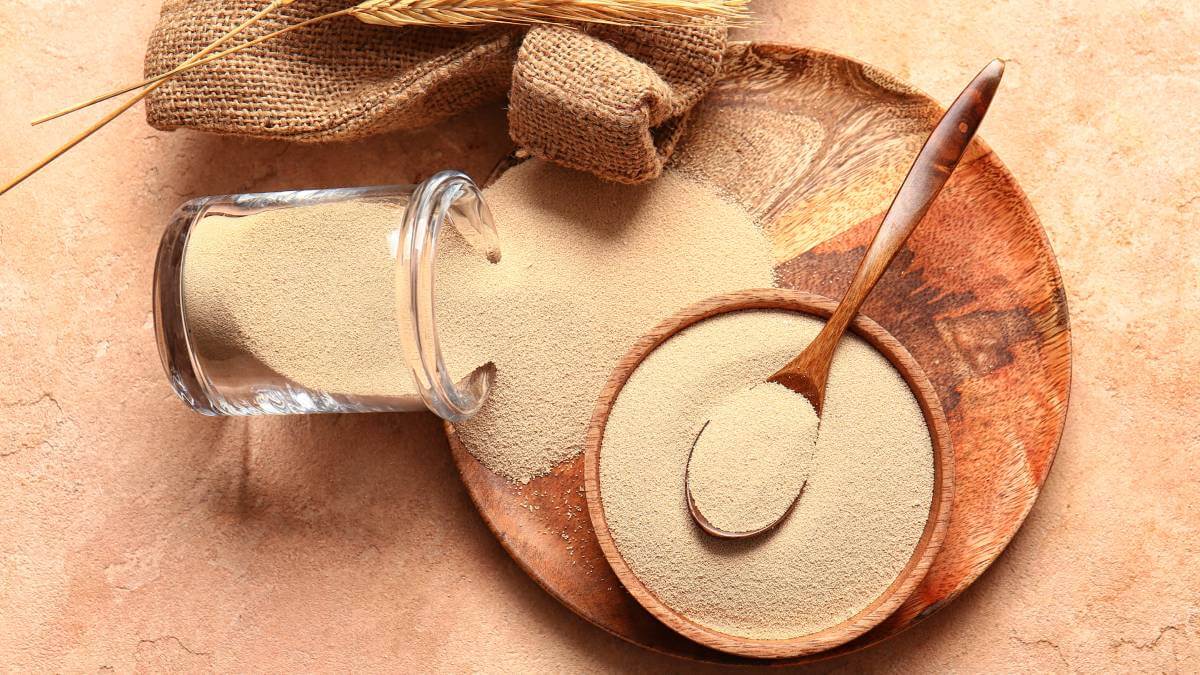Working with yeast can be daunting. There are seemingly so many rules, so much can go wrong and the outcome can be so unreliable.
But there are a few rules to follow that should ensure you are the baron of breadmaking and the prince of pizza bases.
But first, how does yeast work?
Yeast looks like an inert, everyday ingredient, but lurking behind that beige exterior is a little dynamite.
Yeast is a micro-organism that can be found all around us, including in the soil, on plants and in the air.
It’s a fungus, and at least 1500 species have been identified. But for cooking, the species saccharomyces cerevisiae is the one we are interested in.
Beautiful bread
This little beastie converts carbohydrates to carbon dioxide and alcohol through fermentation, which is how we make bread all beautiful and big.
And, yes, that fermentation bit also is vital in making alcoholic beverages. Quite the multitasker.
As an aside, it’s also been the subject of thousands of scientific studies into cell research, so take a bow saccharomyces cerevisiae.
Okay, let’s wave away all that technical stuff, how do you get it to work for you?
While yeast is eager to get started, it can also be temperamental, so there are several tips to make your journey into yeast land easier.
The temperature
Yeast doesn’t like to be too hot, it will begin to die at about 57ºC. So always make sure any liquid you add is only lukewarm or room temperature.
Also some people in colder climates like to let yeast rise in a warm oven. If you are using that method, heat the oven to 50ºC and then immediately turn it off. Don’t let the oven run while the dough is inside.
Yeast will rise in colder temperatures, but it will take longer. Some bakers prefer a longer time to allow the favours to develop more; others just want bread on the table pronto.
The best place to let yeast-based dough rise is in a warm, draught-free position. The warmth is to keep the yeast happy; the draught-free bit is so it rises evenly.
Always keep it covered, otherwise it will dry out on top and you will get crusty bits when you go to knead it.
Watch the salt
Adding salt directly to yeast will kill it stone dead. Never let salt come into direct contact with yeast. Always add it with other ingredients. Just follow the recipe. Any good recipe would never recommend mixing salt and yeast.
Sugar is fine, yeast feeds on sugar, however it’s not vital to many yeast-based recipes, so if it’s not on the ingredients list, don’t panic, your dough will still rise. The yeast will instead be feeding on the starches in the flour.
Why does it need a ‘rest’
Pretty much all yeast-based recipes call for the dough to ‘rest’ at least once. I know you’re impatient for delish home-baked bread, but chill out. This step lets the gluten relax and settle, and the yeast to get going, which means fluffy, light, airy bread. It also makes it easier to shape, so grab a cuppa and wait.
Ease yourself into baking with yeast. Your best first recipe is pizza dough. It only requires one rest and is almost impossible to get wrong.
If it is looking a bit shady, cover it with enough ingredients and any flaws will soon be forgotten.
Other good recipes for beginners are focaccia, no-knead bread and dinner rolls. The latter is more of a US thing, but as a result, there are plenty of recipes out there, even some that can be made in the slow cooker.
Happy yeasting everyone.
Are you a confident bread baker? Could you add to this list of tips? Why not share your experience in the comments section below?
Also read: Tomato and Olive Focaccia

